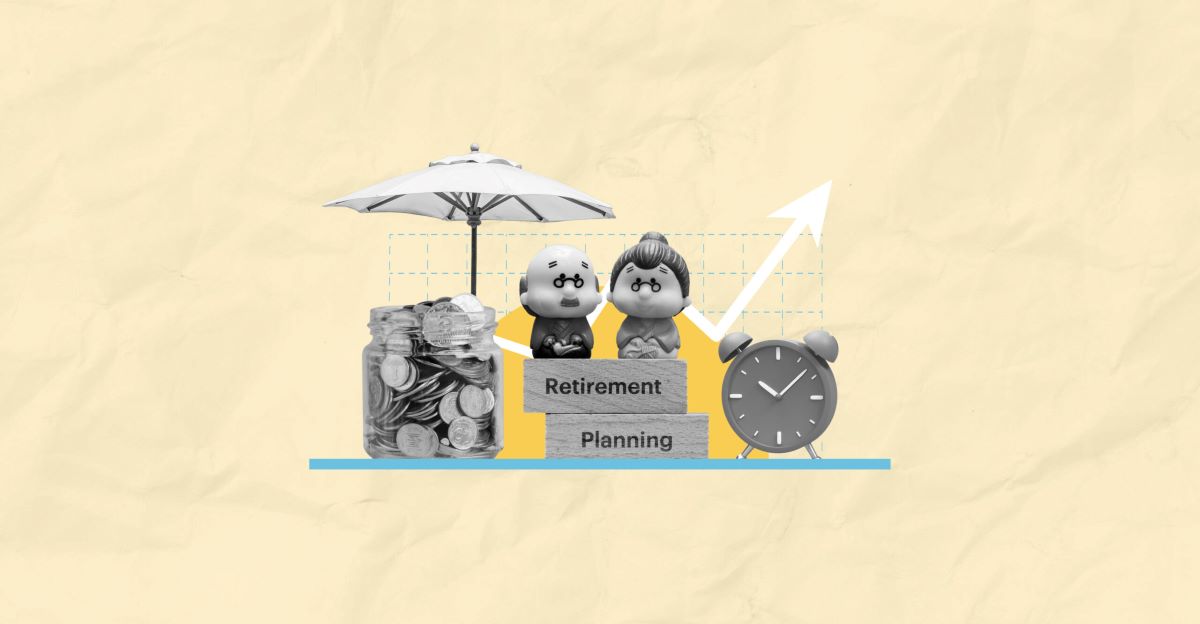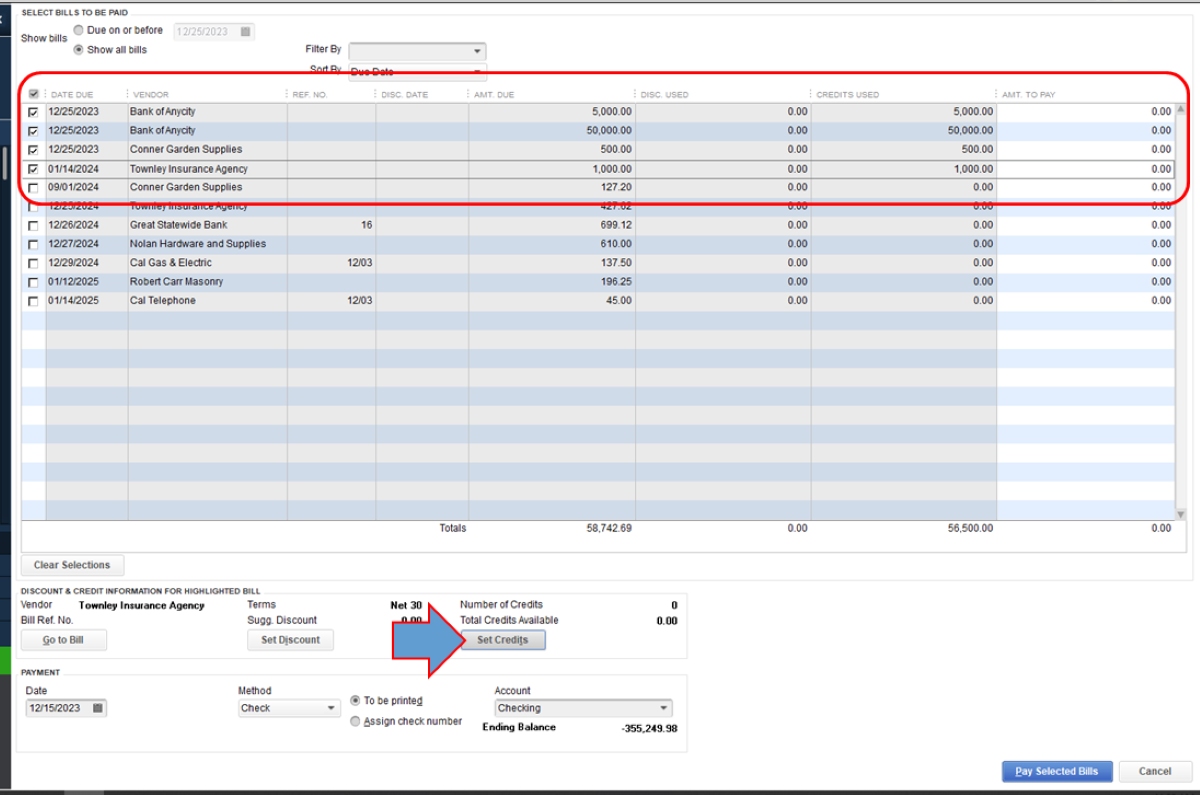

Finance
How To Calculate Retirement Planning
Published: January 21, 2024
Learn how to calculate retirement planning with our finance guide. Plan your future wisely and secure your financial stability.
(Many of the links in this article redirect to a specific reviewed product. Your purchase of these products through affiliate links helps to generate commission for LiveWell, at no extra cost. Learn more)
Table of Contents
Introduction
Planning for retirement is a crucial step towards securing financial stability in the golden years of life. It allows individuals to maintain their desired lifestyle and enjoy a worry-free future. However, calculating retirement needs can seem like a daunting task. With various factors to consider, such as expenses, income sources, and savings, it’s important to have a clear understanding of how to approach retirement planning.
Retirement planning is not just about saving money; it involves careful analysis, estimation, and projection of future needs and resources.
Why is Retirement Planning Important?
Retirement planning helps individuals determine how much they need to save to sustain their lifestyle and meet their financial goals. Without proper planning, retirees may find themselves struggling to make ends meet or facing unexpected financial challenges.
Moreover, the earlier individuals start planning for their retirement, the more time they have to accumulate savings and benefit from compounded returns. This gives them a greater chance to build a substantial retirement nest egg.
The Importance of Calculating Retirement Needs
Calculating retirement needs is a crucial aspect of the planning process. It helps individuals get a clear picture of their financial expectations in retirement and allows them to make informed decisions about saving, investing, and spending. By accurately estimating their retirement expenses, income sources, and savings, individuals can develop a comprehensive strategy to achieve their retirement goals.
This article will guide you through the essential steps to calculate your retirement needs, providing you with the knowledge and tools necessary to build a solid retirement plan. Let’s jump into the first step: determining your retirement age.
Step 1: Determine Your Retirement Age
The first step in calculating your retirement needs is to determine your expected retirement age. This is the age at which you plan to stop working and begin relying on your retirement savings and income sources. It’s important to give this decision careful thought as it will have a significant impact on your financial planning.
Retirement age can vary depending on individual circumstances, personal preferences, and career goals. Some individuals choose to retire early in their 50s or 60s, while others may continue working well into their 70s or beyond. It’s important to consider factors such as health, financial readiness, and desired lifestyle when selecting a retirement age.
Factors to Consider When Determining Your Retirement Age
- Health: Assess your current health status and consider any potential medical needs or concerns that may arise in the future. Retiring earlier may be more feasible if you have health issues or physical limitations that make it difficult to work.
- Financial Readiness: Evaluate your savings, investments, and other sources of income to determine if you are financially prepared for retirement. If you have accumulated enough funds to support your desired lifestyle, you may be able to retire earlier.
- Work Satisfaction: Consider your job satisfaction and overall readiness to leave the workforce. If you enjoy your work and have a fulfilling career, you may choose to continue working for longer.
- Social Security Benefits: Familiarize yourself with the eligibility criteria for Social Security benefits, as this may influence your retirement age decision. The age at which you can start receiving full Social Security benefits ranges from 66 to 67, depending on your birth year.
Consulting with a Financial Advisor
If you find it challenging to determine an appropriate retirement age or need assistance in assessing your financial readiness, consider consulting with a financial advisor. An experienced advisor can help you evaluate your individual circumstances, evaluate your retirement goals, and make informed decisions about your retirement age.
By determining your retirement age, you will have a starting point for estimating the duration of your retirement and can proceed to the next step of calculating your retirement expenses.
Step 2: Estimate Your Annual Retirement Expenses
Estimating your annual retirement expenses is a critical step in calculating your retirement needs. It allows you to determine the amount of money you will require each year to maintain your desired lifestyle during retirement. By accurately estimating your expenses, you can plan and save accordingly to ensure a secure and comfortable retirement.
Consider Your Current Expenses
Start by evaluating your current expenses. This includes your monthly bills, such as housing costs, utilities, transportation, groceries, healthcare, and insurance. Take into account any debts that you are currently paying off, such as mortgages, car loans, or credit card payments.
Keep in mind that some expenses may decrease in retirement. For example, you may no longer have work-related costs like commuting expenses or business attire. On the other hand, certain expenses, such as healthcare, may increase due to potential medical needs. Consider these factors as you determine your retirement expenses.
Plan for Leisure and Travel
Retirement is a time to enjoy life and pursue your passions and interests. It’s important to factor in leisure activities, hobbies, and travel when estimating your retirement expenses. Consider any specific activities or destinations you have in mind and research the associated costs to ensure they align with your budget.
Additionally, think about any major purchases or expenses you anticipate during retirement, such as home renovations, a new vehicle, or supporting family members. These one-time or occasional expenses should be included in your overall budget.
Account for Inflation
When estimating your retirement expenses, it’s crucial to account for inflation. Over time, the cost of living tends to increase, which means that your expenses will likely be higher in the future. Consider using a financial calculator or consulting with a financial advisor to project future expenses based on inflation rates.
Emergency Fund and Healthcare Costs
In retirement, it’s important to have an emergency fund to cover unexpected expenses or emergencies. Set aside some funds to account for these unforeseen circumstances.
Additionally, healthcare costs can be a significant part of your retirement expenses. Medicare is available for individuals aged 65 and older, but it does not cover all medical expenses. Consider private health insurance or supplemental plans to ensure comprehensive coverage.
By carefully estimating your annual retirement expenses, you will have a clearer understanding of how much money you need to save and can proceed to the next step of calculating your retirement income sources.
Step 3: Calculate Your Retirement Income Sources
Calculating your retirement income sources is a crucial step in determining your retirement needs. It helps you understand where your income will come from during retirement and how much you can expect to receive. By accurately estimating your income sources, you can assess whether you have enough funds to support your desired lifestyle and make any necessary adjustments to your retirement plan.
Social Security Benefits
One of the primary sources of retirement income for many individuals is Social Security. Social Security benefits are based on your earnings history and the age at which you choose to start receiving benefits. Visit the official Social Security website or consult with a financial advisor to estimate your projected benefits based on your work history and retirement age.
Pensions and Retirement Accounts
If you have a pension plan through your employer or have been contributing to retirement accounts such as a 401(k) or IRA, these can also provide income during retirement. Calculate the expected income from these sources, taking into account any required minimum distributions (RMDs) that you will need to take once you reach a certain age.
Investment Income
If you have investments such as stocks, bonds, or real estate, they can generate income in the form of dividends, interest, or rental payments. Evaluate your investment portfolio and estimate the income it can potentially generate during retirement. Keep in mind that investments come with risks, so it’s important to consult with a financial advisor to ensure a balanced and diversified investment strategy.
Part-Time Work or Side Income
Some individuals may choose to continue working part-time or pursue side gigs during retirement to supplement their income. If you plan to work in some capacity during retirement, estimate the income you can expect from these activities and factor it into your overall retirement income plan.
Consider Additional Income Sources
Take into account any additional income sources you may have during retirement. This could include rental properties, annuities, royalties, or other sources of income that are specific to your situation. These additional income sources can help offset expenses and contribute to your overall retirement income.
By calculating your retirement income sources, you will have a clearer idea of how much income you can expect to receive during retirement. This information is crucial for the next step: calculating your retirement savings.
Step 4: Calculate Your Retirement Savings
Calculating your retirement savings is a crucial step in determining your retirement needs. It allows you to assess whether you have accumulated enough funds to support your desired lifestyle during retirement. By accurately calculating your retirement savings, you can determine if you need to make any adjustments to your savings strategy or consider additional ways to boost your savings.
Evaluate your Current Retirement Savings
Start by evaluating your current retirement savings. This includes any funds you have saved in retirement accounts such as 401(k)s, IRAs, or pension plans. Take into account any additional accounts or investments specifically earmarked for retirement.
Project Future Savings
Consider your future contributions to your retirement savings. Determine how much you can afford to save each month and project this amount over the remaining years until your retirement age. Take into account any employer matches or automatic increases in contributions that may occur over time.
Consider Investment Returns
Take into account the potential investment returns on your retirement savings. This includes the growth of your investments over time, such as interest, dividends, or capital appreciation. Consult with a financial advisor or use financial calculators to estimate the average rate of return you can expect on your retirement investments.
Account for Inflation
When calculating your retirement savings, it’s crucial to account for inflation. Adjust the current value of your savings and projected future contributions to account for the increasing cost of living over time. Use an inflation rate estimate to ensure your savings are realistic and will maintain their purchasing power in the future.
Seek Professional Advice
Calculating retirement savings can be complex, especially when considering various investment strategies and market conditions. It’s advisable to seek professional advice from a financial advisor who can help you evaluate your savings plan, make adjustments as needed, and recommend strategies to maximize your retirement savings.
By accurately calculating your retirement savings, you will have a clearer understanding of whether you are on track to meet your retirement goals. This information will help you evaluate your retirement plan and make any necessary adjustments to ensure a comfortable and secure retirement.
Step 5: Evaluate Your Retirement Plan
Evaluating your retirement plan is a crucial step in the overall retirement planning process. It involves reviewing and analyzing the information gathered from the previous steps, including your retirement age, estimated expenses, income sources, and savings. By evaluating your retirement plan, you can determine if you are on track to meet your goals and make any necessary adjustments to ensure a successful retirement.
Compare Expenses and Income
Start by comparing your estimated retirement expenses with your projected retirement income. Evaluate whether your income sources, such as Social Security, pensions, and investments, are sufficient to cover your expenses. If there is a gap between your expenses and income, you will need to consider adjustments to either side of the equation.
Consider Lifestyle Changes
Assess your desired lifestyle during retirement. Determine if you are comfortable with the estimated expenses and if any adjustments can be made to align with your retirement income. This may involve making choices such as downsizing your home, reducing travel plans, or finding cost-effective ways to pursue your hobbies and interests.
Explore Additional Savings Opportunities
If there is a shortfall in your retirement savings, consider exploring additional savings opportunities. This could include increasing your contributions to retirement accounts, finding ways to reduce current expenses and redirecting those savings towards retirement, or seeking higher returns on your investments through careful portfolio management.
Review Investment Strategies
Review your investment strategies and asset allocation to ensure they align with your retirement goals and risk tolerance. Consider diversifying your investments to balance risk and potential returns. Regularly monitor and adjust your investment portfolio as needed, especially as you approach retirement age.
Continuously Monitor and Update
Remember that retirement planning is an ongoing process. Life circumstances, financial markets, and personal goals may change over time. Continuously monitor your retirement plan and make periodic updates as necessary to ensure it remains on track.
Consult with a Financial Advisor
Lastly, consider consulting with a financial advisor who can provide expert guidance and advice tailored to your specific situation. A professional can help you evaluate your retirement plan, make informed decisions, and offer strategies to optimize your retirement savings and income.
By evaluating your retirement plan, you can make any necessary adjustments to ensure a successful and secure retirement. Regularly reviewing your plan will help you stay on track, adapt to changing circumstances, and work towards achieving your retirement goals.
Conclusion
Planning for retirement is a process that requires careful consideration, analysis, and projection of future needs and resources. By following the steps outlined in this article, you can calculate your retirement needs and develop a comprehensive plan to achieve your financial goals in retirement.
Determining your desired retirement age is the first step in the planning process. Consider factors such as health, financial readiness, and work satisfaction when deciding on your retirement age. This decision will guide your calculations and help you estimate the duration of your retirement.
Estimating your annual retirement expenses is the next crucial step. Take into account your current expenses, factor in inflation, and plan for leisure activities and potential healthcare costs. This estimation will help you determine the funds required to maintain your desired lifestyle during retirement.
Calculating your retirement income sources is essential in understanding where your income will come from during retirement. Consider Social Security benefits, pensions, retirement accounts, investment income, and potential part-time work or side income. This calculation will give you a realistic expectation of how much income you can expect to receive.
Evaluating your retirement savings is a critical step to ensure you have accumulated enough funds to support your retirement lifestyle. Assess your current savings, project future contributions, and consider investment returns and inflation. Seek professional advice to optimize your savings strategy and investment portfolio.
Lastly, evaluate your overall retirement plan by comparing your estimated expenses and income, considering possible lifestyle changes, exploring additional savings opportunities, reviewing your investment strategies, and continuously monitoring and updating your plan as needed.
Retirement planning is a journey that requires ongoing attention and adjustment. Regularly reviewing and updating your retirement plan will help you stay on track and make necessary adjustments along the way. Consult with a financial advisor to guide you through the process and provide personalized advice tailored to your situation.
Start early, plan wisely, and take the necessary steps to secure your financial future. With careful calculation and diligent planning, you can achieve the retirement you envision and enjoy a comfortable and fulfilling life in your golden years.














